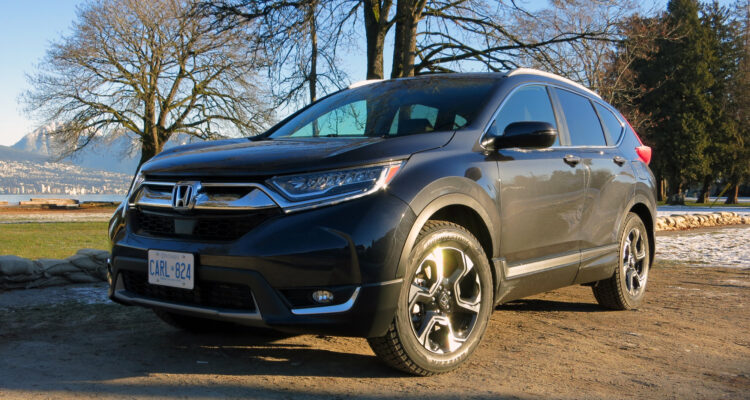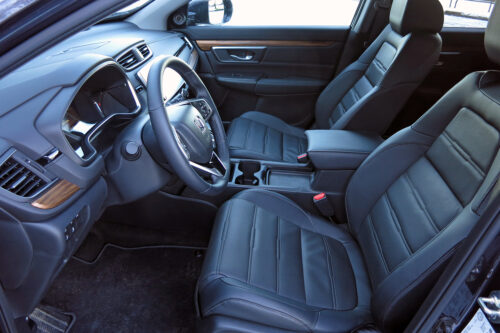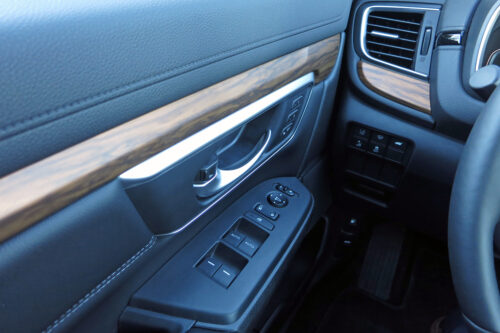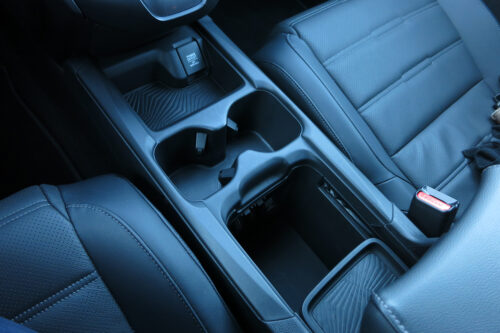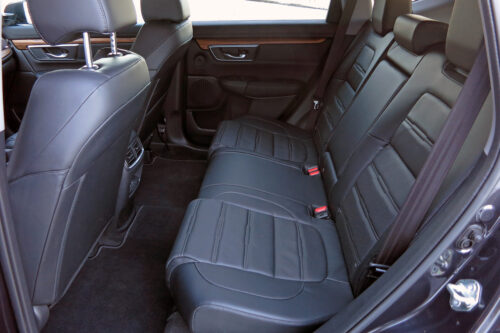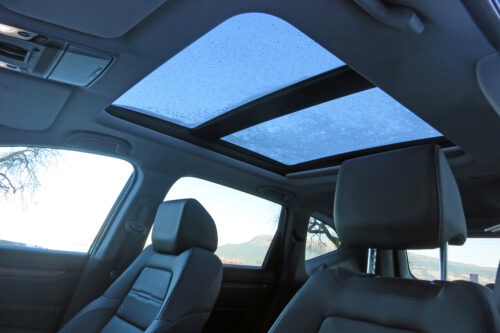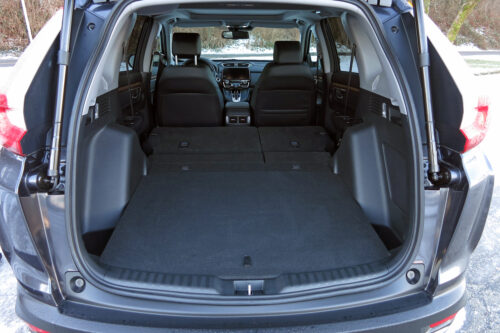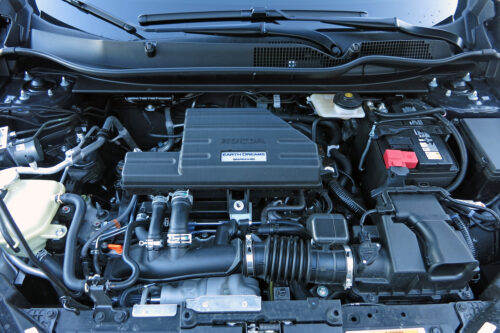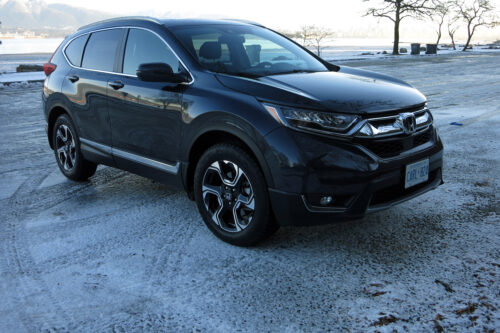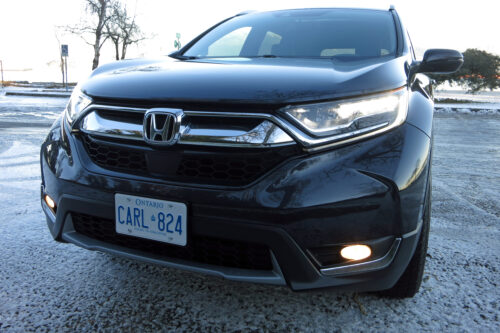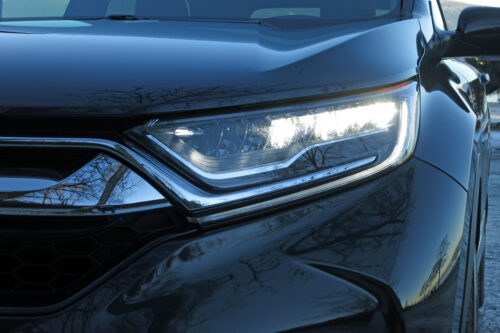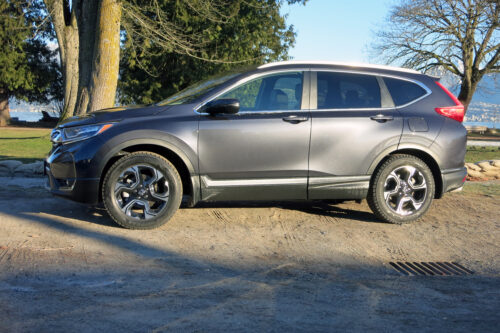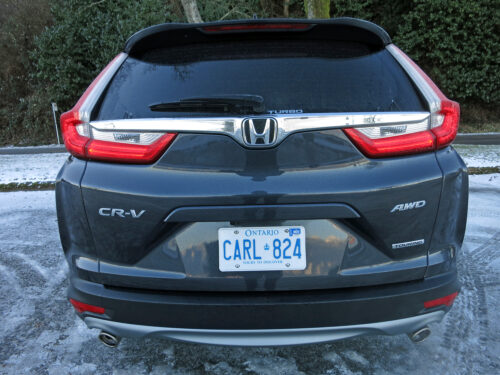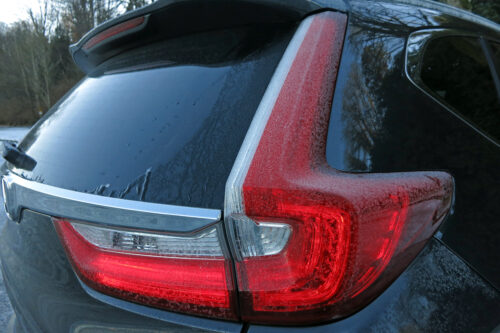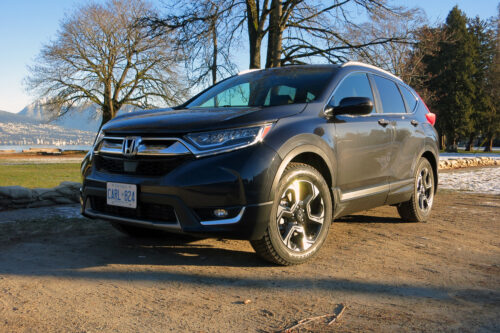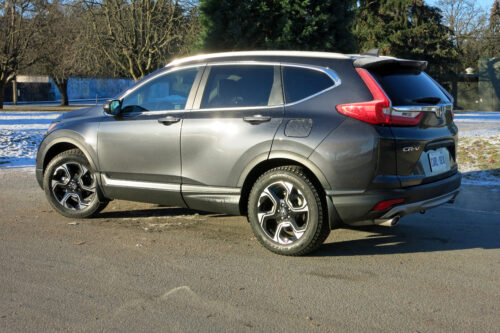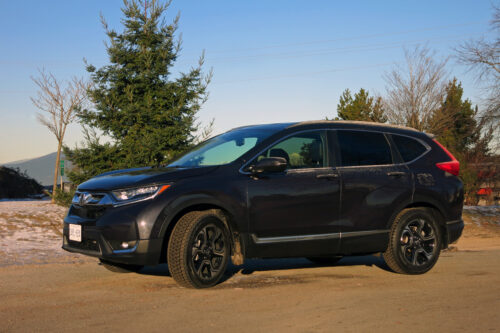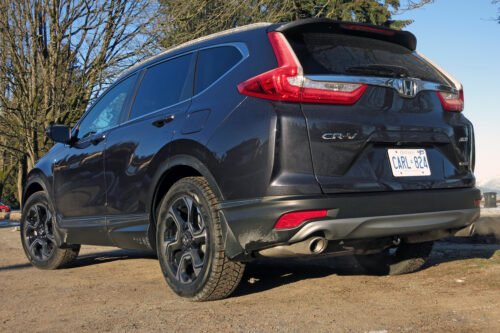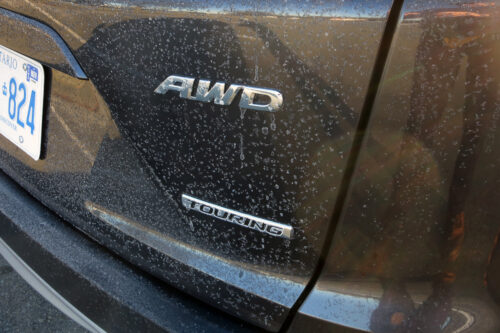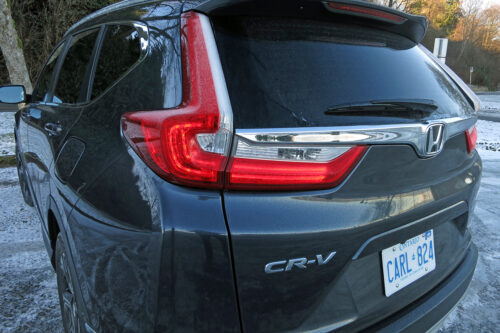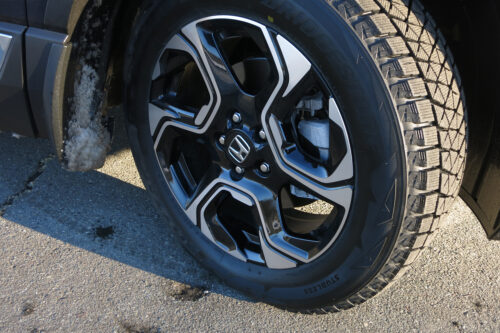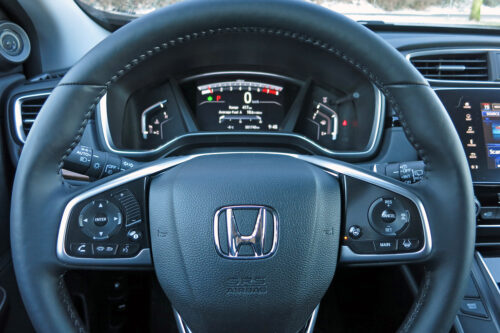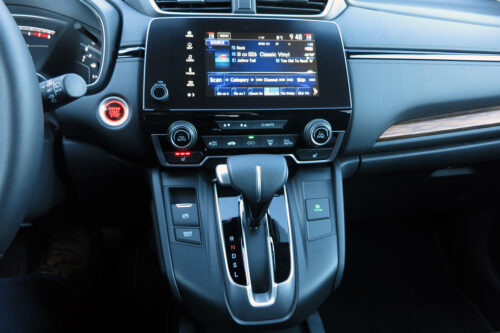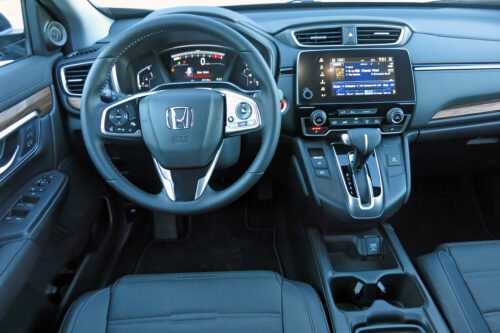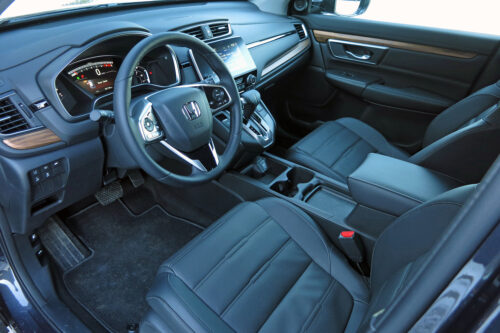If there’s a vehicle category that crosses all demographic boundaries, it’s got to be that of the compact crossover/SUV. It’s the “Swiss Army knife” of choice these days for anyone with a pulse and a driver’s licence, and that’s why car manufacturers constantly “up” their game in this ferociously competitive segment.
A few of the latest upped examples under the “affordable” heading (this means nothing German) include Mazda’s CX5, Ford’s Escape, Kia’s Sportage, and this week’s ride: the 2017 Honda CR-V.
The Honda CR-V, Ford Escape, and Toyota RAV4 are the best-selling compact SUVs in Canada, however, there are many worthy entrants to consider beyond this Holy Trinity; the Mitsubishi Outlander, Hyundai Tucson, and Subaru Outback to name a few.
While the RAV4 is the oldest generation of the trifecta, it’s still a fairly fresh face considering. Of the three populist sleds, the 2017 CR-V is the newest kid on the block. It’s undergone a parallel renewal with the Honda Civic.
This was pretty much a “ground up” rehabilitation, which included a better-handling chassis along with a new powertrain and a new body and cabin, making this much more than a Hollywood face-stretch. The CR-V is now larger in every interior and exterior dimension. It also has more ground clearance and is slightly taller than before, all of which give it a substantial appearance on the road.
The new body lines and exterior design impart bold, aggressive messaging, which is an improvement over last year’s version, however, the 18-inch wheels on my top-tier Touring test vehicle were a little too “unhinged” for my taste.
The CR-V’s cabin is where most of the aesthetic improvements can be found. It’s a far more upscale affair now, closing the gap between “budget” and “premium.” The front perches in my Touring tester were exceptionally comfortable. Their high-seating position provided excellent visibility, which added to the ease of operation the CR-V has been renowned for.
Not contributing to “ease of operation” is Honda’s decision to move many everyday functions to the vehicle’s touchscreen. I feel like a broken record here, but I’m vehemently opposed to the trend to replace tactile, intuitive knobs with on-screen programming, and Honda’s done just that.
I challenge anyone to safely scroll through the list of Sirius XM radio stations via the slow-responding CR-V’s touch-screen. You get my point, and hopefully so will automobile manufacturers if I keep railing away at this abhorrent interpretation of accessible technology.
On the functional side, the CR-V’s commodious cabin offers outstanding rear-seat leg and headroom, along with a flat cargo floor when the 60/40 rear bench seat is folded down. This process couldn’t be easier.
After waving a foot beneath the rear bumper to open the tailgate, both rear-seat backs can be dropped via the levers mounted on either side of the cargo bay. There’s no need to remove head restraints or do any fancy flip and flop to maximize cargo space.
The CR-V’s new engine is a turbocharged 1.5L 4-cylinder unit dispensing 190 horsepower while producing 179 lb-ft of torque. A continuously variable automatic transmission (CVT) backs-up the small but energetic power plant. Depending on trim-level, the CR-V is either pulled by its front wheels or propelled by all four under the auspices of Honda’s Real Time AWD system with Intelligent Control.
Honda has vastly improved their all-wheel drive setup for 2017 by enabling the system to direct up to 45% of the engine’s torque to the real wheels. The former setup limited the rear-wheels to only 25% of the grunt. Shod in Bridgestone winter tires, I found my AWD tester capable of shooting up ice-laden hills with nary a loss of traction or sense of reluctance.
My overall driving impressions after a week behind the CR-V’s wheel in some of the worst weather that soft-bellied Vancouverites are ever to face, are on the whole, remarkably positive. Honda has made significant progress in the area of operational refinement by reducing road and engine noises, though under hard acceleration the engine’s laboured growl is still more than optimal.
Worthy of tepid praise is the CR-V’s continuously-variable transmission. It’s a smooth performer, and less-prone to the CVT “boat engine” effect thanks to simulated full-throttle gear changes.
Power delivery is more than adequate around town. The CR-V will scoot away from stop lights with ease and effortlessly dispatch hills. While it’s small turbocharged mill is a pleasing unit under general usage, it can be challenged by stints in the passing lane where a little more grunt would be beneficial.
One of the highlights for me was the vehicle’s compliant, composed ride dynamics. This is reflective of the new chassis shared with the Civic. It gives the CR-V a notably smooth ride, unruffled by potholes and the like. This leap in execution takes the CR-V to the next level of ride quality, delivering a more premium-like driving experience than before.
It’s interesting to observe the vast improvement in quality and operational polish bestowed upon the compact SUV/crossover segment in the last few years.
Competition and rising customer expectations have forced manufacturers to rapidly up their games but not necessarily their prices. Purchasers of the new CR-V are the latest beneficiaries of this trend. The 2017 CR-V starts at $28,571 in B.C. for the FWD LX model, with the base AWD version starting at $31,371.
2017 Honda CR-V
Trim level: Touring
Price as tested (before taxes): $38,090
Freight: $1,850
Configuration: front engine, all-wheel drive
Engine/transmission: 1.5L turbocharged I-4 / Continuously-variable transmission
Power/torque: 190 hp / 179 lb-ft
Fuel-economy ratings (L/100km): city 8.7, highway 7.2
Observed fuel-economy (L/100km): 10.8
Warranty (basic): 5 years / 100,000 km
Competitors: Ford Escape, Hyundai Tucson, Kia Sportage, Mazda CX5, Mitsubishi Outlander, Subaru Forester, Toyota RAV4
Related links:



